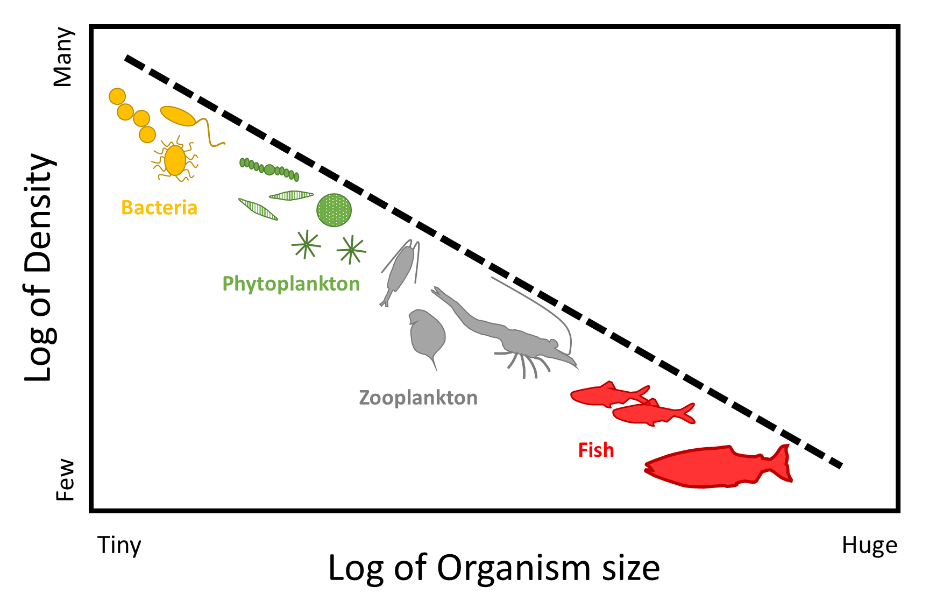Winter 2019 eNewsletter

CIGLR Postdoctoral Fellow, Dr. Thomas M. Evans. Photo Credit: Thomas M. Evans.
Spotlight: Postdoctoral Fellow Research Update
How Many Fish are in the Great Lakes? Using Microscopic Organisms to Estimate Fish Numbers
Dr. Thomas M. Evans, Cornell University
Determining the number of fish in the Great Lakes is a difficult but critical task to ensure sustainable fisheries. Dr. Thomas Evans is investigating a technique to accomplish this more easily, by counting and measuring smaller organisms. Because larger animals, like fish, depend on smaller organisms for their food, there can be a strong relationship between the density of organisms and their body size (also called size spectrum theory, Figure 1). Size spectra relationships have been noted in marine systems for more than 50 years, but are not as widely studied in lakes.
“In aquatic environments, strong relationships exist between organism density and body size and now our team is applying these principles in an attempt to estimate the amount of fish in each Great Lake,” says Dr. Evans.

Figure 1: An idealized version of the organism size spectra that might be found in the Great Lakes. For each “big” fish there are tens of thousands of other organisms that it relies upon. Figure Credit: Thomas M. Evans.
While it would be nice to sample fish directly, they are very hard to capture using methods that produce reliable density estimates. By applying size spectra principles, we should be able to estimate the number of fish from the lake’s smaller organisms. The United States Environmental Protection Agency (US EPA) uses their research vessel, the R/V Lake Guardian, to collect phytoplankton (microscopic plants) and zooplankton (small animals) twice a year from all five Great Lakes. This monitoring program has been ongoing in the lakes since 1983, resulting in an exceptional long-term monitoring dataset that evaluates the health of the Great Lakes ecosystem through time.
“If relationships between body size and density of these organisms exists, we can predict fish numbers and potentially detect disturbances in the food web (i.e., a new invader enters),” says Evans.
“Currently we are developing size spectra for each lake,” says Evans. “Although our data are preliminary, we are pleased to see relationships appearing between organism abundance and biomass. Our team plans to extend the range of organisms and sizes in the study, which will help increase the power of our predictions.”
Modeling food webs in the Great Lakes is a rich area of study and many different approaches have been applied. However, these approaches often rely on large amounts of data, or limited study regions. Size spectra relies on only two measures: the weight of an organism and its density.
“The data used in our models are already collected yearly across all of the Great Lakes,” says Evans, “making our work an added benefit at no additional sampling cost. If our approach is successful, we hope it will be useful for state and federal agencies to detect changes in the structure of the Great Lakes food webs.”
Dr. Thomas M. Evans and his advisor Dr. Lars Rudstam are the recipients of a 2018 CIGLR Postdoctoral Fellowship award. Dr. Evans is completing his research at the Cornell University Department of Natural Resources working with Drs. Lars Rudstam (Cornell), James Watkins (Cornell), Doran Mason (NOAA GLERL), and Zachary S. Feiner (Wisconsin Department of Natural Resources). During his fellowship, he is investigating the application of size spectra to Great Lakes food webs and whether this approach can be adopted by state and federal agencies.
